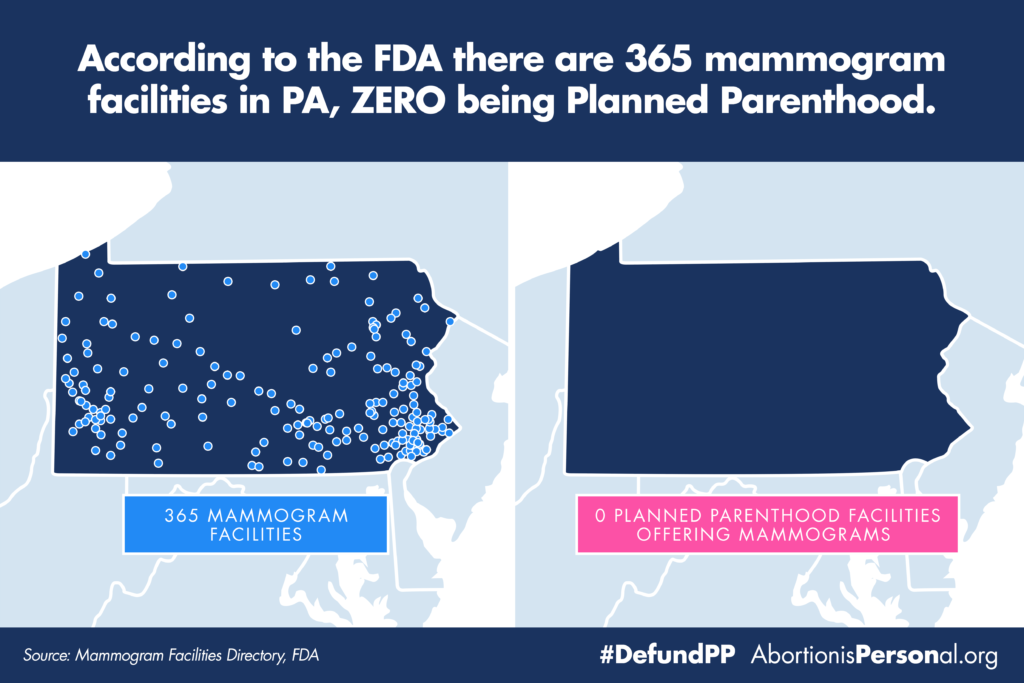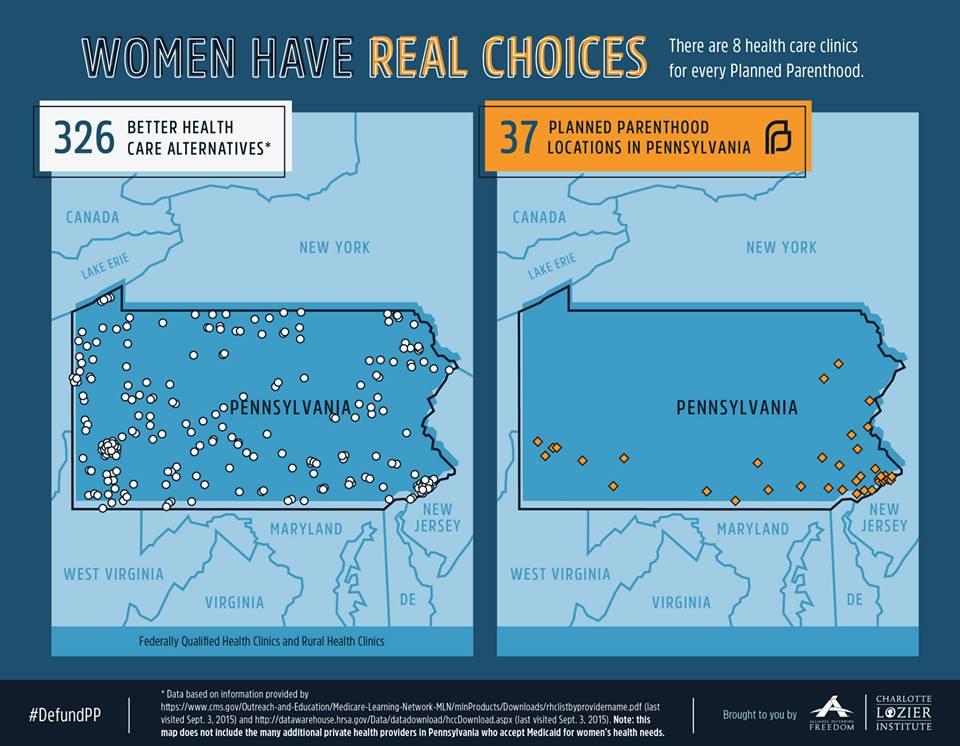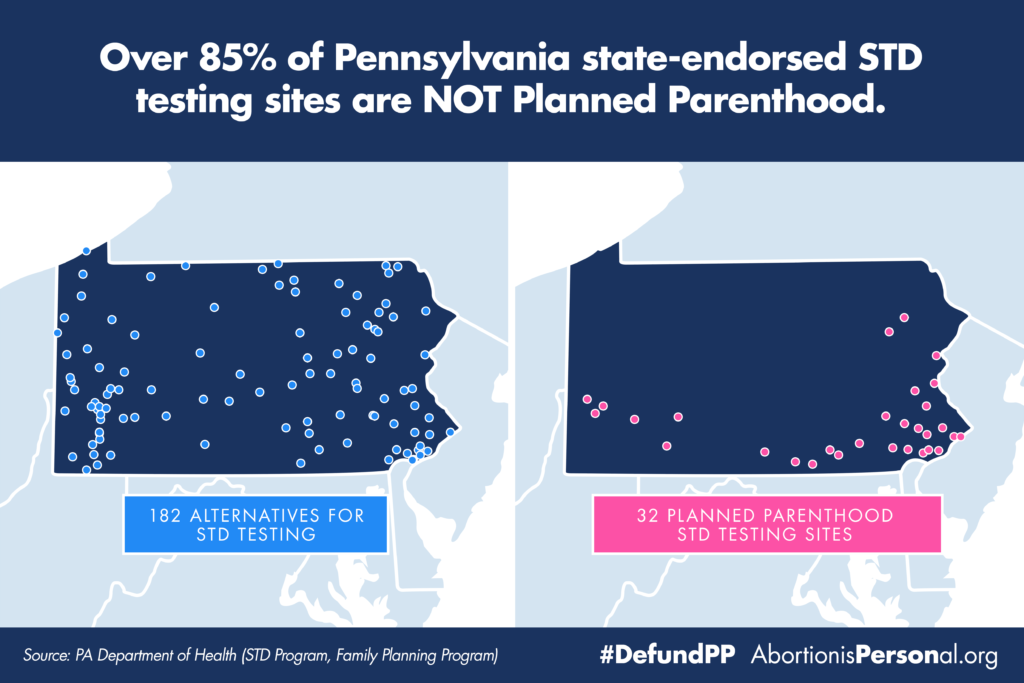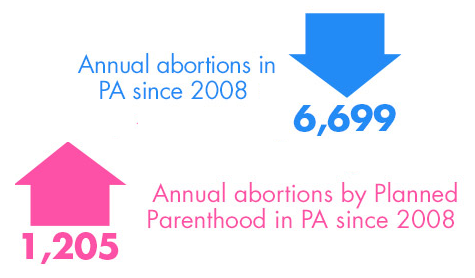1. Fewer people are using Planned Parenthood.
15,681 – that’s the number of fewer people who used a Pennsylvania Planned Parenthood in 2014 versus the previous year. That’s a drop of over 13% in one year. (Nationally, from 2006-2013, the number of people using a Planned Parenthood dropped by 13%).
Planned Parenthood serves less than 1% of Pennsylvania’s population: 0.77% of the population go to the abortion giant for services.
2. There are 326 alternatives to the 37 Planned Parenthood sites for women’s health care.
3. Cancer screening services at Planned Parenthood are dropping.
Nationally, between 2006 – 2013, Planned Parenthood cut breast cancer screenings in half. Over this same period, their revenue went up 28% and taxpayer funding increased 57%. And from 2013 to 2014 alone, the two biggest regions of Planned Parenthood in PA – Keystone and Southeastern – dropped pap tests by 32% while the Western region had breast exams drop 18%.
4. There are 365 mammogram facilities in Pennsylvania – none of which are Planned Parenthood sites.

5. Over 85% of PA sites offering STD testing are non-Planned Parenthood sites.
There are 214 sites that are part of Pennsylvania’s State Programs for STD and family planning services; the vast majority (182) being clinics not associated with Planned Parenthood.
Additionally, of the 214 locations, not included are many pregnancy care centers that offer these services; often free of charge (such as Morning Star Pregnancy in Harrisburg or the Pregnancy Resource Clinic in State College).
6. Eight of the ten largest abortion sites in Pennsylvania are Planned Parenthood.
By number of abortions performed:
- Planned Parenthood Philadelphia – Locust Street: 5,658
- Philadelphia Women’s Center: 5,129
- Planned Parenthood Philadelphia – Comly Road: 3,311
- Allentown Women’s Center: 2,644
- Planned Parenthood Pittsburgh: 2,366
- Planned Parenthood West Chester: 1,079
- Planned Parenthood Allentown: 1,078
- Planned Parenthood Reading: 952
- Planned Parenthood Warminster: 939
- Planned Parenthood York: 693
7. Planned Parenthood’s market share on abortion is growing.
Between 2008-2013, Pennsylvania’s annual abortion rate dropped by over 6,600 abortions. Yet, over the same period of time, Planned Parenthood’s annual abortion rate in Pennsylvania went up by over 1,200 abortions.
At a time when abortion in PA is at record lows, Planned Parenthood Pittsburgh, for their 1st quarter of 2015, reported the most abortions of any quarter since 2008.
Nationally, Planned Parenthood performs nearly one out of every three abortions in America (32% of all abortions). That’s up from one out of every five in 2004.







Abortion aside, if Planned Parenthood has a surplus of tens of millions of dollars a year which it contributes exclusively to the Democrat Party, and all of their services are duplicated by many other agencies, why do they need tax payer money? It looks fishy to give them millions of dollars so that millions get returned in political contributions. Get with it and defund them. Oh and if I’m not mistaken, selling human tissue is a felony. Why hasn’t anyone been charged? Maybe Kathleen Kane has some other more pressing issues in the short term to deal with.